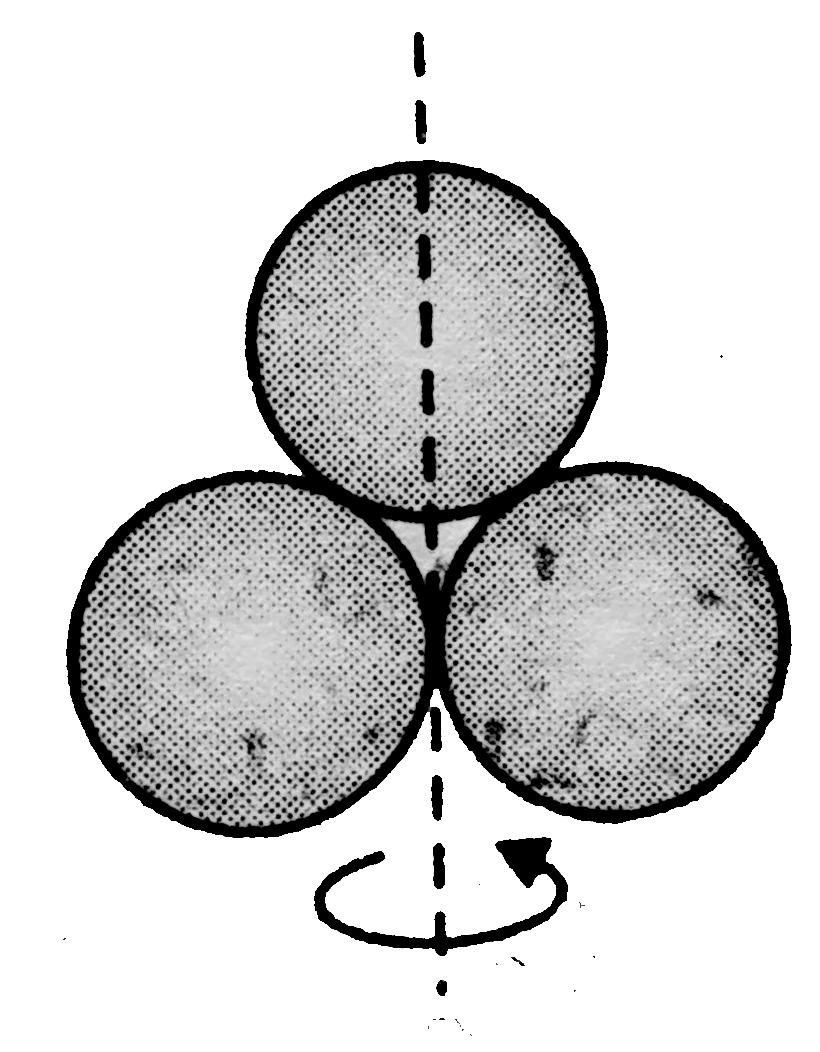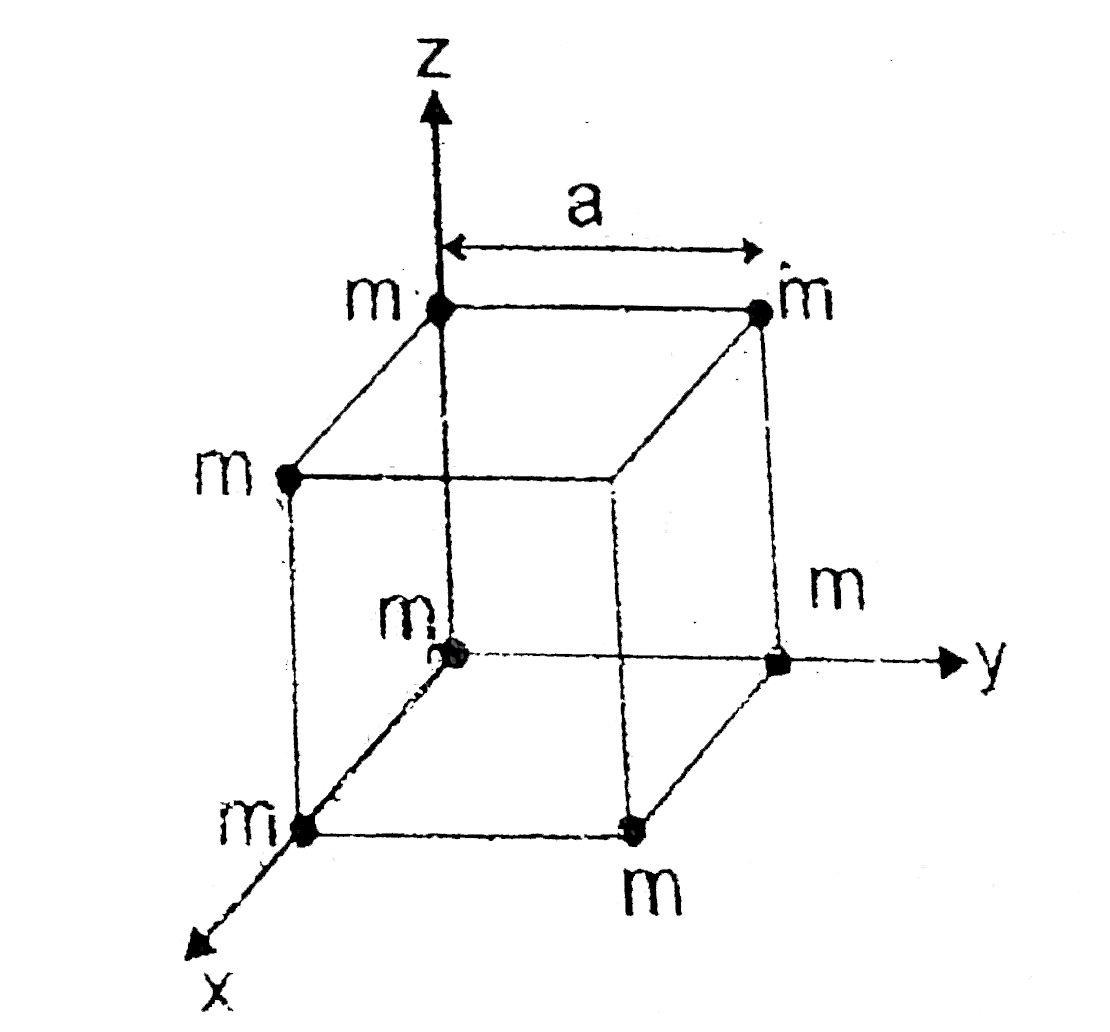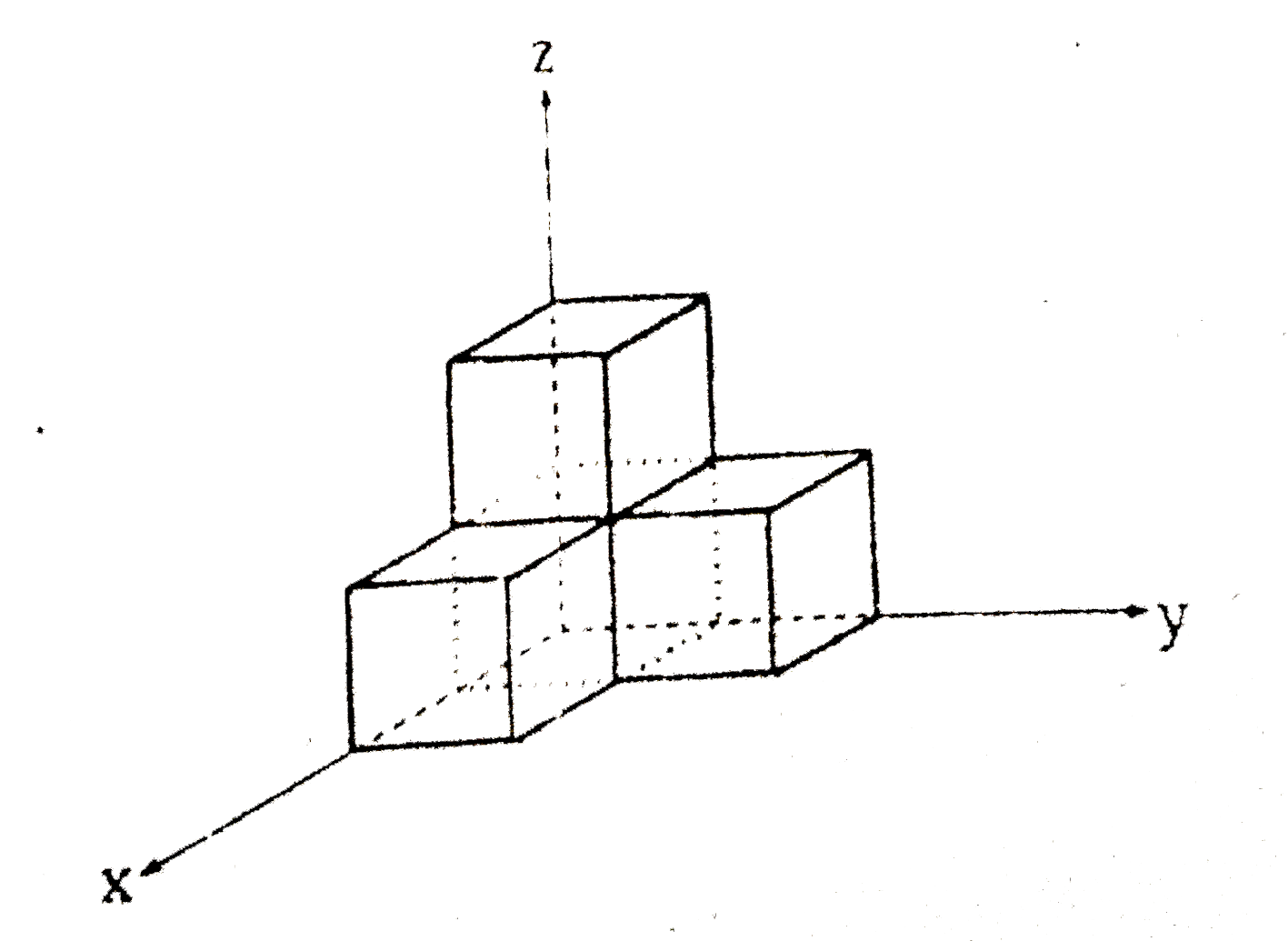In four atoms of same radius are placed at the alternate corner of a cube touching each other, than the length of body diagonal of the cube is equal to √x×R, where R is the radius of atom. Find the value of x?
The correct Answer is:6
To solve the problem, we need to find the value of x in the equation for the body diagonal of a cube formed by four atoms of the same radius R placed at alternate corners of the cube.
1. Understanding the Arrangement:
- We have a cube where four atoms are placed at alternate corners. Each atom has a radius R and they touch each other.
- The atoms at alternate corners will form a diagonal across the cube.
2. Finding the Face Diagonal:
- In a cube, the face diagonal can be calculated using the formula:
Face Diagonal=√(a2+a2)=a√2
where a is the edge length of the cube.
- Since the atoms are touching, the face diagonal will be equal to the distance between the centers of two touching atoms, which is 2R.
- Therefore, we can set up the equation:
a√2=2R
- Solving for a:
a=2R√2=R√2
3. Finding the Body Diagonal:
- The body diagonal of the cube can be calculated using the formula:
Body Diagonal=√(a2+a2+a2)=a√3
- Substituting a=R√2:
Body Diagonal=R√2⋅√3=R√6
4. Relating to the Given Equation:
- According to the problem, the length of the body diagonal is given as:
Body Diagonal=√x⋅R
- We have found that the body diagonal is R√6, so we can equate:
R√6=√x⋅R
- Dividing both sides by R (assuming R≠0):
√6=√x
5. Finding x:
- Squaring both sides gives us:
x=6
Final Answer:
The value of x is 6.
- We have a cube where four atoms are placed at alternate corners. Each atom has a radius R and they touch each other.
- The atoms at alternate corners will form a diagonal across the cube.
- In a cube, the face diagonal can be calculated using the formula:
Face Diagonal=√(a2+a2)=a√2
where a is the edge length of the cube.
- Since the atoms are touching, the face diagonal will be equal to the distance between the centers of two touching atoms, which is 2R.
- Therefore, we can set up the equation:
a√2=2R
- Solving for a:
a=2R√2=R√2
- The body diagonal of the cube can be calculated using the formula:
Body Diagonal=√(a2+a2+a2)=a√3
- Substituting a=R√2:
Body Diagonal=R√2⋅√3=R√6
- According to the problem, the length of the body diagonal is given as:
Body Diagonal=√x⋅R
- We have found that the body diagonal is R√6, so we can equate:
R√6=√x⋅R
- Dividing both sides by R (assuming R≠0):
√6=√x
- Squaring both sides gives us:
x=6
The value of x is 6.
Similar Questions
Three rings, each of mass m and radius r, are so placed that they touch each other. Find the moment of inertia about the axis as shown in Fig.
 View Solution
View Solutioninside the circles x2+y2=1 there are three circles of equal radius a tangent to each other and to s the value of a equals to
View SolutionA compound formed by elements X and Y has a cubic structure in which X atoms are at the corners of the cube of and two atoms (Y) are at each body diagonal of the cube.
a. Calculate: (i) Zeff' (ii) total number of atoms in a cube, and (iii) formula of the compound.
b. If all atoms form one body diagonal of the cube except corners are removed, calculate: (i) Zeff' (ii) total number of atoms in the cube, and (iii) formula of the compound.View SolutionSeven particles, each of mass m are placed at the seven corners of a cube of side 'a', but one corner is vacant, as shown in figure. If the x−coordinates of the centre of mass of the system is nam. Where n and m are least integer values. Then find vlaue of m−n.
 View Solution
View SolutionTwo spheres of the same material and same radius r are touching each other. If the gravitational force of attraction between them is directly proportional to rn, then the value of n is :
View SolutionIn a hexagonal system system of crystals, a frequently encountered arrangement of atoms is described as a hexagonal prism. Here, the top and bottom of the cell are regular hexagons, and three atoms are sandwiched in between them. A space-cilling model of this structure, called hexagonal close-packed is constituted of a sphere on a flat surface surrounded in the same plane by six identical spheres as closely as possible. Three spheres are then placed overt the first layer so that they touch each other and represent the second layer so that they touch each other and present the second layer. Each one of the three spheres touches three spheres of the bottom layer. Finally, the second layer is converted with a third layer identical to the bottom layer in relative position. Assume the radius of every sphere to be r.
The number of atom in this hcp unit cell is
(a)4
(b)6
(c)12
(d)17View SolutionFour point charge q,−q,2Q and Q are placed in order at the corners A, B, C and D of a square. If the field at the midpoint of CD is zero then the value of q/Q is 5√5x. Find the value of x.
View SolutionCalculate the number of atoms in a cube based unit cell having one atom on each corner and two atoms on each body diagonal.
View SolutionSilver crystallizes in face-centred cubic unit cell. Each side of this unit cell has a length of 400 pm. Calculate the radius of the silver atom. (Assume the atoms touch each other on the diagonal across the face of the unit cell. That is each face atom is touching the four corner atoms).
View SolutionFind the center of mass(x,y,z) of the following structure of four identical cubes if the length of each side of a cube is 1 unit.
 View Solution
View Solution

